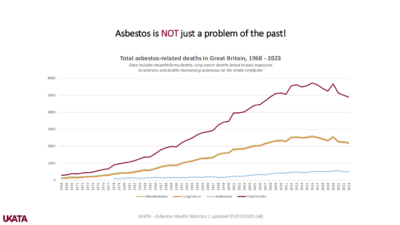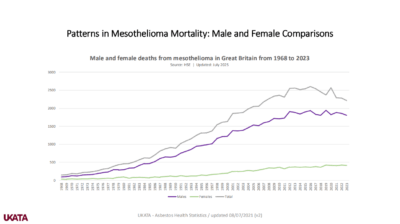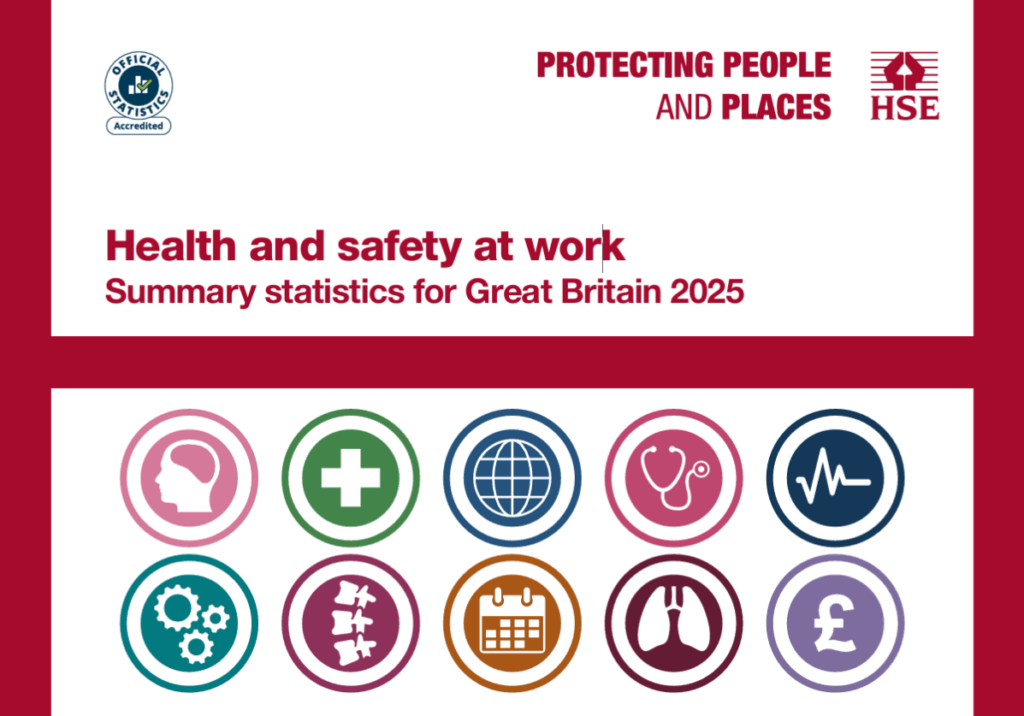The latest figures from the UKATA Asbestos Health Statistics, supported by figures from the HSE’s 2025 report, show an average of 13 people per day in Great Britain still die from asbestos-related diseases. That equates to approximately 5,000 lives lost each year, a tragic legacy of historic exposure that continues to cast a long shadow over the present.
The Statistics: A Stark Reminder
In 2023 alone, the UK recorded:
- 2,218 mesothelioma deaths, a cancer almost exclusively caused by asbestos exposure.
- A similar number of lung cancer deaths estimated to be linked to asbestos.
- 497 deaths from asbestosis, a chronic lung disease caused by inhaling asbestos fibres, excluding cases where mesothelioma was also present.
Understanding the Delayed Health Impact
Asbestos-related diseases have an extended latency period, often taking 15 to 60 years to manifest after exposure. Most cases today stem from the widespread use of asbestos-containing materials in the UK’s post-WWII building boom, especially before the 1980s.
This long delay between exposure and illness means we are only now seeing the full effects of industrial practices from the past century, while some data suggests a potential plateau in mesothelioma deaths, we must remain vigilant.
Mesothelioma: A Clear Indicator of Past Exposure
Mesothelioma has an unusually strong link to asbestos, making it a key indicator of the long-term health impacts of exposure. Annual death figures for mesothelioma provide a stark view of the ongoing human cost, despite asbestos being banned in the UK since 1999.
Trends over the last two years may suggest a slight decline in overall cases, but the numbers remain alarmingly high – a clear signal that asbestos is not just a problem of the past.
Where the Risk Remains
Although asbestos use is now prohibited, many older buildings still contain asbestos in insulation, ceiling tiles, pipe lagging, and other materials. Tradespeople, maintenance workers, and even office staff in older premises may still be at risk if asbestos is disturbed without proper precautions.
This is why asbestos awareness, training, and safe management remain absolutely critical and it’s why we continue to champion compliance with UKATA-approved standards and HSE guidance.
What Can You Do?
- Conduct asbestos surveys for any pre-2000 buildings.
- Ensure all staff receive UKATA-accredited asbestos awareness training.
- Work with qualified asbestos removal and management professionals.
- Implement strict control measures before any refurbishment, demolition, or maintenance work.
The current statistics reflect historic exposure — but they should also serve as a stark warning. Without proper control and awareness today, we risk repeating the same mistakes for future generations.
If you’re unsure about your obligations or need support with asbestos management, we are here to help. From UKATA training to site inspections and compliance advice, we’re committed to protecting your people, your premises, and your peace of mind.
Click here to view our Asbestos Awareness Training Course
Sources: https://www.hse.gov.uk/statistics/assets/docs/asbestos-related-disease.pdf






